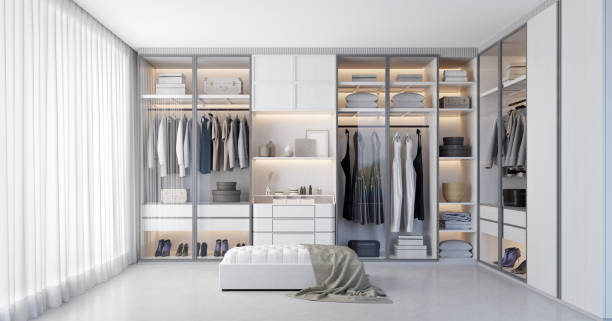Smart Storage Solutions for Compact Sleep Areas
Effective storage in small bedrooms can transform how you sleep and live. This article outlines practical approaches to storage, layout, lighting, acoustics, and materials that support restful sleep and easier upkeep. It emphasizes organization, sustainability, and adaptable solutions suited to compact living.

Living in a compact sleep area requires deliberate choices so a bedroom remains restful and functional. Thoughtful storage systems reduce clutter that can interfere with sleep and create a sense of calm. Alongside storage, attention to layout, lighting, acoustics, ventilation and textiles supports comfort and ergonomics. This article explains practical storage strategies, organization tactics, and sustainable materials that help compact rooms feel larger while improving sleep quality and ease of maintenance.
How can storage maximize compact sleep areas?
Efficient storage centers on using vertical and hidden space to keep pathways clear and maintain good sleep ergonomics. Consider built-in wardrobes that reach the ceiling, shallow shelving over headboards, and under-bed drawers to store seasonal textiles and bedding. Wall-mounted cabinets and peg systems free floor area for circulation, improving ventilation and access. Multi-purpose furniture—beds with integrated storage or ottomans that double as seating and containment—reduces furniture duplication. Select breathable storage materials to protect linens, and arrange items by frequency of use to limit bending and lifting that can disrupt ergonomics.
What layout choices improve space and organization?
A compact layout favors fewer, better-positioned pieces. Place the bed where natural light supports sleep patterns but not direct morning glare; orient pathways to allow easy access to closets and windows. Use scale-appropriate furniture and avoid oversized nightstands. Zoning with rugs or low shelves creates visual separation between sleep and storage without walls. Use color strategically—lighter tones expand perceived space while a single darker accent can provide depth. Keep circulation routes clear of storage to simplify organization and reduce daily maintenance.
How does organization reduce clutter and maintenance?
Regular decluttering and intentional organization keep small bedrooms functional. Adopt a seasonal purge routine for clothing, textiles, and accessories to limit accumulation. Use labeled bins, drawer dividers, and clear containers so items are easy to locate and return, reducing time spent searching and lowering stress. Upcycling old boxes or furniture can yield cost-effective storage while supporting sustainability. Plan maintenance by choosing washable textiles and easy-to-wipe surfaces; this reduces the labor needed to refresh a compact room and prolongs the life of furnishings.
How can lighting and acoustics support compact sleep areas?
Layered lighting improves usability in tight spaces: ambient lighting for general visibility, task lighting for reading, and low-level fixtures to ease night-time movement. Use dimmers or warm-colored bulbs near the bed to signal sleep time. For acoustics, textiles such as rugs, curtains, and upholstered headboards absorb sound and help create a quieter environment, supporting deeper sleep. Wall-hung acoustic panels or cork elements reduce echoes in compact rooms. Insulation choices and window treatments can also moderate external noise while contributing to thermal comfort.
What role do ventilation and insulation play for sleep quality?
Good ventilation keeps air fresh and helps regulate temperature, which is important for sleep. Where possible, enable cross-ventilation with strategically placed windows or use energy-efficient mechanical ventilation to maintain airflow without drafts. Insulation around windows and walls reduces heat loss and limits noise transfer, improving comfort and acoustics. Select breathable textiles and mattress materials to avoid trapping moisture in confined rooms. Proper ventilation combined with targeted insulation increases both sleep quality and long-term sustainability of the space.
How can sustainability and textiles influence small-bedroom design?
Sustainable choices reduce environmental impact and often improve durability. Choose textiles made from natural fibers or recycled content for bedding, curtains, and rugs—these materials typically breathe better and can be easier to care for. Upcycling furniture gives character while keeping costs down and lowering waste; a refurbished dresser can become a compact storage hub. Consider finishes and paints with low volatile organic compounds to improve indoor air quality. Regular maintenance—vacuuming textiles, washing bedding, and checking seals—prolongs items’ usefulness and supports a healthier sleep environment.
Compact sleep areas benefit from an integrated approach: clever storage, a considered layout, purposeful organization, and attention to lighting, acoustics, ventilation, and materials. Applying these strategies reduces clutter, supports ergonomics, and helps maintain a restful atmosphere without sacrificing sustainability or style.





